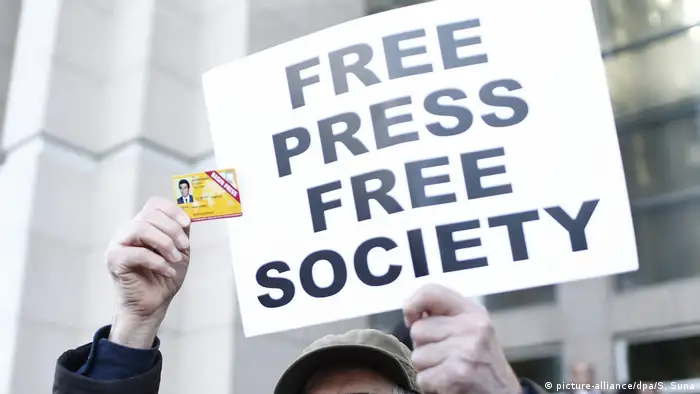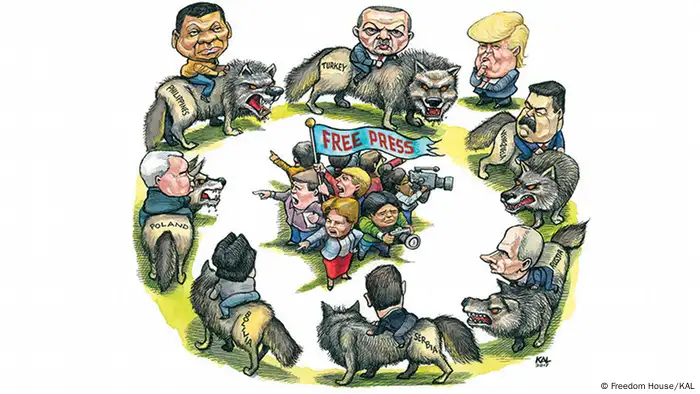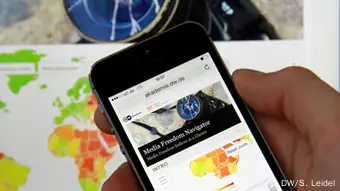new reports
Media freedom in a downward spiral
In the run-up to World Press Freedom Day, the latest media freedom reports paint a bleak picture. Here are the critical points from a media development perspective.
To mark World Press Freedom Day on May 3, three organizations have released reports exploring the state of media freedom around the world – Freedom House's Freedom of the Press 2017, Reporters without Borders' 2017 World Press Freedom Index and the Media Sustainability Index 2017: Europe and Eurasia from IREX.
The bad news is that media freedom continues its downward spiral around the globe, according to all three reports. Here are the main reasons:
- Governments have expanded legislation repressing or restricting freedom of expression, especially online and on social networks. Governments are increasingly introducing, or tightening, antiterrorism or cybercrime legislation allowing them to shutdown the Internet and muzzle dissenting voices in times of social unrest. They also use other laws, such as defamation, in attempts to silence independent or opposition-oriented media. In one startling case, five Brazilian journalists faced dozens of near-identical charges brought by judges and magistrates. "The lawsuits were apparently coordinated, using similar language, but were spread out geographically, forcing the journalists to spend considerable resources traveling between the courts," Freedom House reported.
- Political influence is undermining the media's editorial independence. Authorities are using techniques such as licensing schemes, disguised ownership, and governmental control over advertising to influence reporting. In its report, IREX, for example, reported a rise in contracts between authorities and media outlets to publicize the accomplishments and proceedings of local government or national ministries. In Europe, governments of Poland and Croatia stepped up their control over the country's public-service media, a measure that contributed to steep plunges in their rankings.
- Authoritarian regimes are turning to the tried and true method of using violence to suppress critical voices. In Burundi, for instance, reporters face attacks by security forces and arbitrary, often violent, arrests. More than 100 journalists have fled the country since 2015.
Other issues of great concern include:
- Hostile rhetoric against media. Prominent politicians and influential figures are trying to discredit news outlets or inconvenient reporting. The long list includes the Philippine president, Rodrigo Duterte, making death threats against the media to Serbia's attempts to brand critical news outlets as liars.
- Increasing efforts to restrict or manipulate public discourse on the net. Internet shutdowns, online harassment and manipulative news content became more widespread. The concern is that fake news will undermine trust in media already under fire from the hostile rhetoric mentioned above.
- Mass surveillance and content filtering. This isn't just a problem in authoritarian regimes, but also in Western democracies, who according to Freedom House "have recently passed laws that tip the balance in favor of eavesdroppers and lack sufficient oversight mechanisms and safeguards against abuse."
Where's press freedom the worst?
Press freedom is still lowest in the traditionally repressive nations of North Korea, Turkmenistan, Uzbekistan and Eritrea. The deadliest places for journalists continue to be conflict zones such as Syria, Yemen and Iraq.
Organized crime and radical groups such as the Islamic State specifically target media professionals around the world. In Mexico, for instance, Reporters without Borders found the level of risk for journalists is only just behind that of Syria and Afghanistan, with violence by Mexican drug cartels causing the country to drop to the 147th place in the organization's ranking.
Is there any good news?
There are a few bright spots in the reports, but not that many.
- The situation has improved in Belarus thanks to improved Internet access and fewer online restrictions (although the Eastern European country still places in the not-very-free part of the rankings. In addition, Internet shutdowns in March in response to anti-government protests don't bode well for the future of press freedom).
- The peace process between the government and FARC guerilla forces in Colombia has brought some relief. For the first time in seven years, no journalist was killed in the line of duty in 2016, according to Reporters without Borders.
- Norway and Sweden were lauded for their progressive legislation on freedom of information and the protection of sources.
- Freedom House welcomed attempts to improve media freedom in Argentina, Panama, Sri Lanka and Afghanistan. Although Reporters Without Borders also acknowledged Afghanistan's "readiness to create protective mechanisms for journalists", it believes media freedom there is in a downward spiral because of the worsening security situation.
What does this mean for media development?
- Strengthening media and information literacy is a good first step! Competent media users are better equipped to handle many of the problems outlined in these latest media freedom reports. People need support in acquiring skills such as critically assessing a source’s trustworthiness, recognizing fake news or using social media to share information.
- Don't forget digital literacy and safety. As online filters and surveillance explodes, Internet and social media users need to know how to circumvent censorship and protect themselves online, too. In addition, understanding algorithms can help people discover diverse voices beyond the filter bubble.
- Digital projects should be inclusive, not just for young people. Many media and information literacy projects have a youth focus. But as the rates of smartphone ownership increase and social media use becomes ubiquitous, it's time to make sure projects include a broader range of people.
- Financial independence is the key to media viability. Globally, the powerful exert a massive influence over the media, whether directly through ownership or indirectly by paying for stories or threatening withdrawal of advertising revenue. To have quality, independent and fair reporting, it's critical for media outlets to find sustainable business models. By investing smartly, media development organizations could help to slow down the global decline in media freedom.
- Support trustworthy media outlets. Fake news and anti-media rhetoric can erode trust in the media. Media development can provide a counterbalance to this by supporting those outlets which produce reliable and relevant content and offer a platform for meaningful public debate.
DW Akademie's Media Freedom Navigator gives a visual overview of diverse media freedom indices.
DW recommends
WWW links
- Date 28.04.2017
- Author Peter Deselaers, Alexander Matschke
- Feedback: Send us your feedback.
- Print Print this page
- Permalink https://p.dw.com/p/2c5fM
- Date 28.04.2017
- Author Peter Deselaers, Alexander Matschke
- Send us your feedback.
- Print Print this page
- Permalink https://p.dw.com/p/2c5fM



